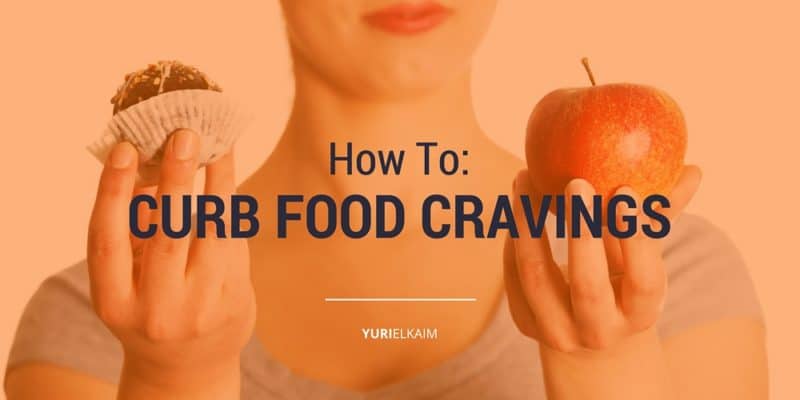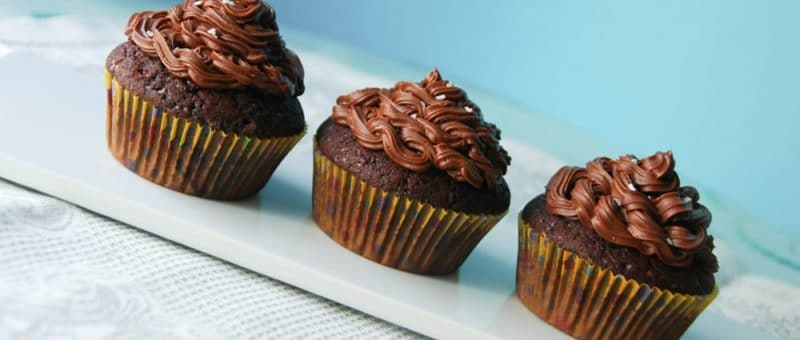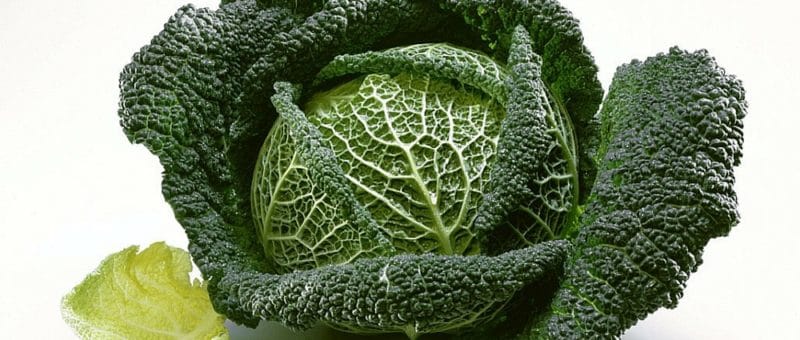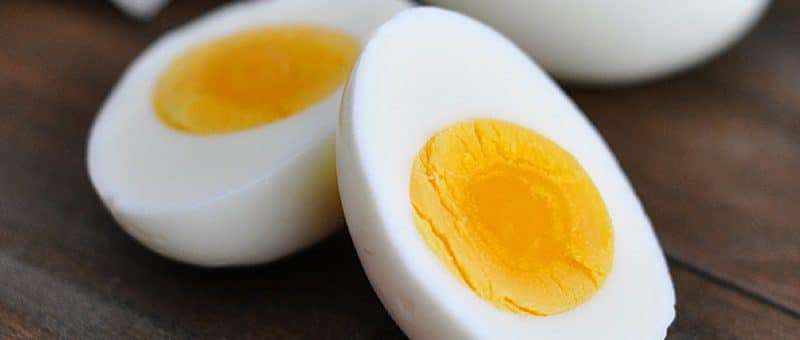
In this article
I want to be very candid about a little secret of mine, something you might not expect of me: I get food cravings just like anyone else.
You know what I’m talking about, right? An irresistible urge to plunge into a bowl of salted caramel ice cream, or maybe a mean hankering for an extra gooey slice of sausage and peppers pizza?
We all have them. Personally, my weakness is chocolate.
That said, food cravings barely hit me as much as they used to because I’ve learned how to curb them for the most part. But I’m still human.
What’s even better is that I can now use my cravings as a barometer for my overall health, so if and when they do hit, I know exactly what I have to adjust to both kill my cravings and keep my health on track.
In this article, I’m going to share my reliable methods to fix that fix you only think you need. It’ll save you some unnecessary frustration and help you maintain your fat-burning diet a lot easier.
Why Food Cravings Occur
As I said before, everyone gets food cravings at some point. According to research on the subject, 100% of women have food cravings whereas 70% of men are struck by them. [1]
Most people end their cravings by simply giving into them and gorging on whatever food they’ve been dying to eat. It’s understandable, because cravings activate dopamine and opioid centers in the brain and drive the individual to satisfy the urge.
In that way, cravings are like addictions, and even cause withdrawal symptoms. If you’re a coffee drinker, just think about how you feel when you don’t get your caffeine fix. Not so great, right? That’s called withdrawal.
We don’t fully understand why food cravings occur, but we do know they can be driven by physical, emotional or social needs.
Some of the commonly suspected physical triggers are:
* Low sodium, low blood sugar, or other mineral deficiencies.
* Social and habitual factors are likely food craving causes. You may come to associate certain foods with good feelings, and over time, this makes your body crave a specific food. This is where we get the term comfort food from.
* Food cravings may also be a sign of withdrawal. Sometimes the body is sensitive to a certain food item, which ironically makes us crave it more. Sounds weird, I know, but here’s why:
When you continually eat the same food (or high amounts of it), you weaken the enzyme pathways required for its digestion. With time, this can lead to undigested proteins that seap into the bloodstream and evoke an undesirable inflammatory immune response. In an odd way, it’s as if your body craves what it has become sensitive to. For me, that’s bread. I crave it, yet when I eat it, my immune system is kicked it into high gear. So our body starts craving the food to satisfy this odd dependency, and in its absence shows withdrawal symptoms in the form of a craving.
* Low serotonin levels may also be to blame for food cravings. Serotonin is a neurotransmitter that regulates the mood, sleep, and the appetite center in the brain. A low serotonin level activates the appetite center to crave a specific food that can stimulate the synthesis of serotonin in the body. For women, serotonin is lowest before menstruation, and that may explain the cravings for chocolate and sweets before menstruation. Studies have shown that sugar or carbohydrates stimulate the production of serotonin from the amino acid tryptophan.
* Another possible explanation is related to the release of endorphins. An endorphin is an internal morphine or an opioid-like chemical. It is responsible for blocking pain perception, creating a good mood, and inducing euphoria similar to opioids.
* Stress eating is another possible mechanism that can explain cravings. Mood swings and factors like stress, anger, sadness or depression can trigger these intense desires. Cortisol that is released in situations of stress or distress can trigger a specific food demand, notably for fatty foods. Cortisol is known to favor fat storage in the stomach, and also initiates your fight or flight response in the face of perceived danger, which increases stored sugar breakdown leading to blood sugar imbalances.Thus, chronic stress can trigger cravings, especially for sweets which stabilize our blood sugar and give us that soothing hit of serotonin to calm our anxiety.
What kinds of food cravings are there?
As you can see, cravings can happen for all kinds of reasons, but what happens when you give in to them?
Food cravings tend to be for foods that give you an intense, immediate rush of satisfaction, and are often salty or sweet, or may even be alcohol or caffeine.
What you’ll find is that these crave-causing foods usually have one thing in common: they create acidity in your blood.
This becomes problematic because consuming too many acid-forming foods upsets the delicate pH balance in your blood, which ideally should be slightly alkaline.
Acidic blood, although still controversial in medical circles, is a breeding ground for disease. It accelerates fat storage as your body tries to shuttle dangerous acids from the blood into safe storage lockers known as your “fat cells”.
Furthermore, acidic blood compromises the integrity of your red blood cells and reduces their ability to flow freely through the body to your cells, which is necessary for producing energy. I talk about this extensively in my New York Times bestselling book, The All-Day Energy Diet.
That’s just the tip of the iceberg, so it should go without saying that maintaining a healthy pH balance in your blood is important. It’s also one of my secrets for beating cravings.
But how can you do that if your craving is so overwhelming?
As I often tell my clients and readers, how you heal one thing is how you heal anything, so to tackle your cravings, you have to tackle your overall health, as well as the social and emotional triggers that drive you to junk food.
In other words, the process that helps you lose weight is the same process that helps you boost your overall energy. It’s also the very same one that will help you find true peace of mind.
And as a welcome side effect, you’ll finally overcome your food cravings.
How to Get Rid of Your Food Cravings
1. Go Alkaline
The first and most important step is to supercharge your diet with alkaline foods. The goal is to get your blood to a slightly alkaline state between 7.35 and 7.45 on the pH scale.
So, how do you get it back into this range after bingeing on acid-laden junk foods you just can’t resist?
The first step is to de-stress, cleanse and detox your body with a detox regime.
[Related: 7 Liver-Healthy Foods Your Body Will Thank You for Eating]
Don’t worry, you don’t have to do a full blown cleanse. It can be as simple as eating and drinking more greens. Green vegetables are the greatest source of alkaline minerals and by consuming more of them, you can start tipping the scale back in your favor.
2. Incorporate More Protein into Your Diet
Once you’ve started to alkalize your body, begin adding more protein to your diet. Even though protein is acidic, it’s the secret to keeping you full longer and keeping away undesired cravings.
A diet that is adequate in protein beefs up the dopamine and dopamine-related hormones in the brain and blood. It stimulates the reward hormones so you don’t feel the emotionally satisfying sweet and salty urges you might otherwise have.
Not only that, but a high protein diet is filling and reduces the level of the “hunger hormone” ghrelin in blood, thereby keeping the hunger pangs and cravings away.
It also increases peptide YY, which is the satiety hormone. This helps you to consume fewer calories and stops irrational binging.
In a 2014 study, researchers conducted a study to see if a high protein diet can curb cravings. They recruited 20 girls and divided them into high-protein breakfast group, a normal protein breakfast group or made them skip breakfast for seven days.
The study demonstrated that a protein-based breakfast reduced cravings for sweet and savory food until lunch. The study also revealed that reports of cravings were fewer in the high protein diet group when compared to the normal protein breakfast group.
Finally, the researchers also detected higher plasma concentrations of HVA—homovanillic acid—in the high protein diet group. HVA is a clear indicator of dopamine production in the brain. [2]
What does this mean? It simply indicates that those who were eating more protein were ultimately more satisfied after the breakfast they ate, thus reducing any cravings they might otherwise have.
[Related: The 8 Worst Breakfast Foods to Eat in the Morning]
Getting healthy is pretty simple when you understand how your body works, and I hope this article gives you some insight into how rebooting your diet and your life can nullify those annoying food cravings you have.
Oh, and one more thing: If you want to get rid of sugar cravings, then naturally you need to get rid of the sugar. Just as an alcoholic shouldn’t just have the occasional drink, you need to abstain from sweets until your body (and palette) have readjusted.
The cool thing is that by that point you’ll be feeling so much better that you won’t even want the sugar anymore! The same goes for cravings of any kind. Avoid the culprit food source.
Can you imagine the freedom you’ll experience when your tastebuds aren’t always screaming at you for satisfaction? Can you imagine how light and contented you’ll feel being completely satisfied eating “healthy” foods?
It doesn’t have to be a dream. Ditch the junk food and bad vibes create some space in your life for a new you.
Enjoy This Article?
Whether you’re looking to lose weight, have more energy, or get a better handle on your diet, getting rid of those crippling cravings (especially sugar) is a must.
Inside my “1-Day Craving Cure” I’ll show you a fail-proof plan to stop even the worst cravings. Click the banner below to get it for FREE.



